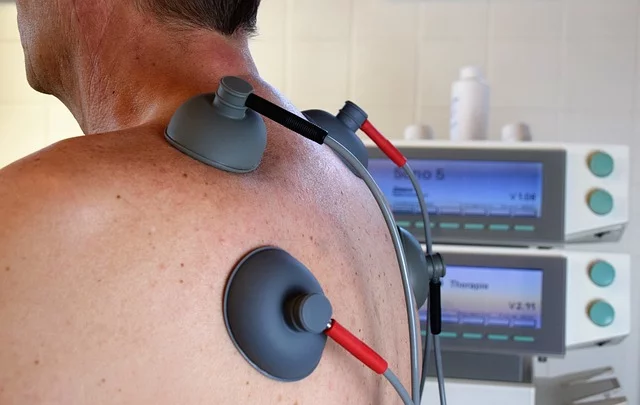Electrical stimulation therapy—otherwise known as electrotherapy—involves attaching electrodes to the skin over a muscle. Once activated, it sends an electrical current through the muscle, causing it to contract repeatedly. This simulates using the muscle over and over to help re-educate the brain by building new neural pathways. This takes advantage of a principle called neuroplasticity: an idea that repetitive exercises promote building neural connections. This is why you will often be asked to perform repetitive tasks when recovering from many types of injuries.
When a stroke occurs, parts of your brain may be damaged and no longer function. This means that the areas affected by the stroke will have to be “rewired” to return to full functionality. Electrotherapy can not only allow your muscles to go through repeated motions to aid in speeding up this process, but it can also help to prevent other issues like muscle weakness or atrophy, chronic or acute pain, impaired circulation, and has been shown to potentially aid in sensory loss.
There are a few different types of electrical stimulation, each with different benefits, depending on the needs of the patient.
- Functional Electrical Stimulation (FES): Restore function to a paralyzed limb.
- Electrical Muscle Stimulation (EMS): Stimulate muscle tissues. Also known as Neuromuscular Electrical Stimulation (NMES).
- Transcutaneous Electrical Nerve Stimulation (TENS): Chronic or acute pain management through the promotion of endorphin production.
- Electromyogram (EMG) Triggered Stimulation (ETS): Detects muscle movements and stimulates according to those movements to encourage development.
- Reciprocal EMG Triggered Stimulation (RETS): The most common treatment for stroke patients, helping to reduce tone or relax muscles on an affected limb.
When not to have electrotherapy?
Although electrotherapy has been shown to help some, it may also be harmful to others. It is important to consult a physician prior to electrotherapy to determine if any of the following areas or issues are of particular concern to you:
- Carotid sinus
- Active deep vein thrombosis or thrombophlebitis
- Near the uterus or lower back during pregnancy
- Cancerous lesions
- Superficial metal like staples or pins
- Localized infections
- Open wounds
- Neck or heart
- If you have a cardiac pacemaker or defibrillator
- Untreated osteomyelitis
- If you are prone to seizures
Electrical therapy usually achieves the best results when combined with repetitive functional exercises provided by your physician. Your therapist will either provide the appropriate settings for your treatment or work with you to determine the most comfortable settings for you. Always check your skin after using electrical stimulation devices, as you want to be sure you are not experiencing adverse reactions to the equipment or the treatment itself.
If you have been cleared for electrotherapy by your physician, Pro Fusion Rehab can help you find the right treatments to return to your former self. We have two state-of-the-art physiotherapy clinics in Pickering and Milton to serve a wide variety of people from across the GTA. Give us a call today to talk with our expert therapists, and book your first pain free appointment!
